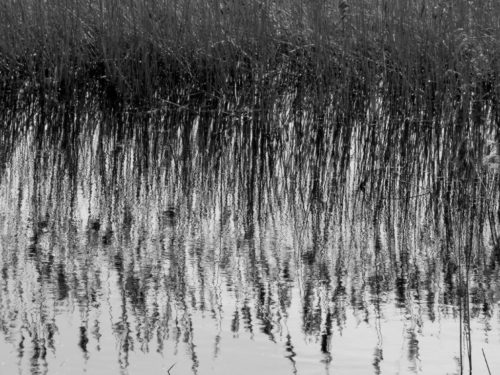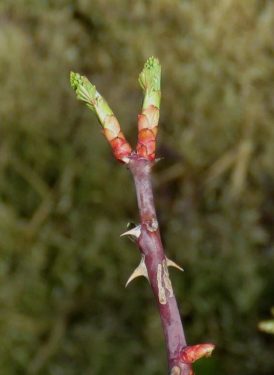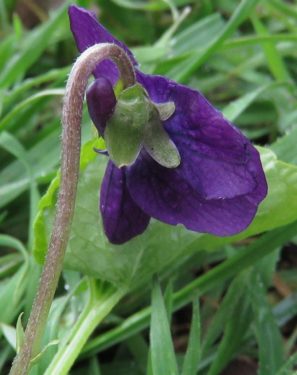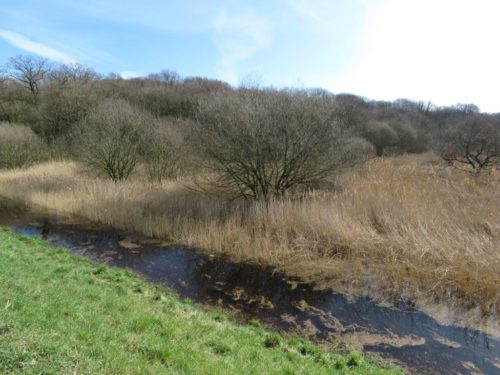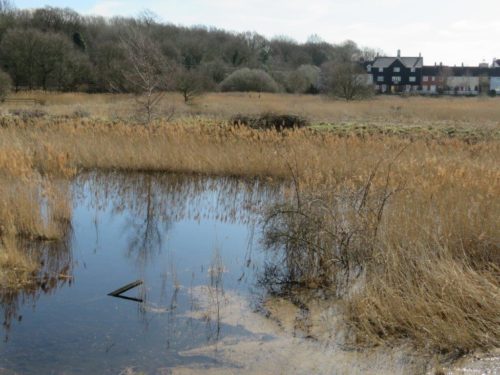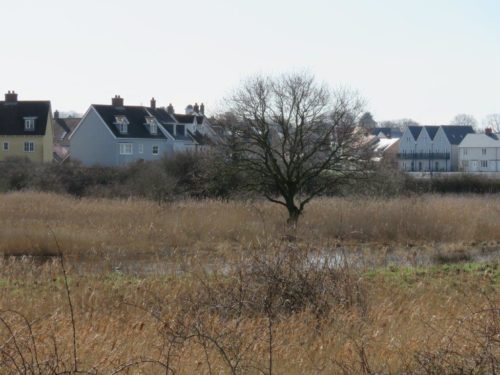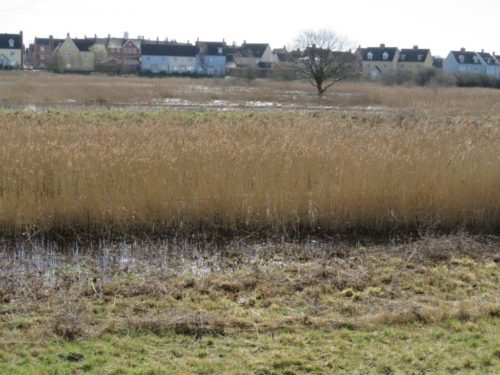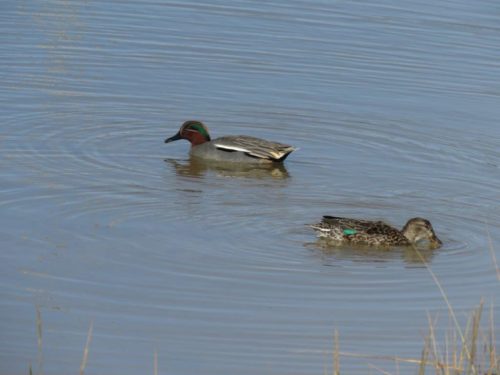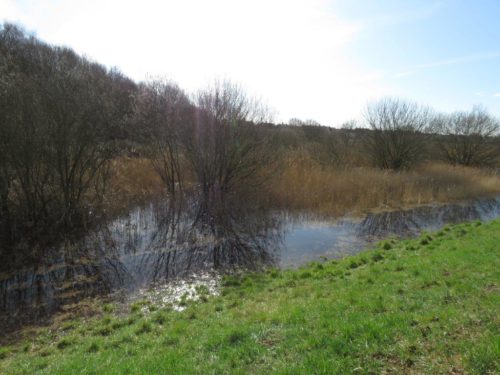In calendar terms, Spring is here at last…not that the dismal rain of recent days encourages much in the way of exploration. But in gaps between the showers, every day is moving Nature’s calendar on a notch or two. The first Sand Martins and Swallows have been seen flying through, while Chiffchaffs are coaxed into song at every hint of sunshine and warmth. Buds are bursting before our eyes, vibrant new greens brightening up the greyscape, as violets reveal their welcome intensity underfoot. And not just colour, but also scent, at least with some species. Best of all is the Sweet Violet, bearing a fragrance so intense it can anaesthetise our scent receptors: time then to revert to other identification characters. The picture below may not be a classic portrait, but it does show clearly the bluntly rounded sepals and stems with copious deflexed hairs, features that confirm the species’ identity.
However it is water which defines WildWivenhoe at the moment. Rain, snowmelt, and high tides have conspired to turn most walks into a mudbath. Around Ferry Marsh water levels are especially high, and indeed have been for most of the winter, because of a blocked sluice. Concerns have been raised about this, particularly as a result of footpaths being impassable and also potential effects on our best local population of Water Voles; as a result the Environment Agency is due to deploy pumps in the next few days to try and shed the surplus water.
But, at least from the wildlife perspective, does the flooding really matter? I tend to think not. The clue is in the site’s name: Ferry Marsh…not Ferry Meadows-with-a-few-wet-ditches. Marshes are meant to be at least periodically wet: this encourages wetland wildlife and helps to maintain wetland habitats. Water Voles are quite happy living away from water, at least temporarily, so the only real risk to them is if they are concentrated in particular parts of the site, and then become vulnerable to predation. Water birds are certainly making most of the water, with feeding Little Egret (surprisingly scarce in these parts since the February freeze) and displaying groups of Teal, both on the marsh and the river, taking advantage not only of the expanded habitat but also the lack of disturbance from humans and dogs.
A serious inundation will also do great things for the marshland habitat. One of the greatest problems marshes suffer from is the invasion by trees and other weeds (a weed being any plant which is growing in the wrong place) when the ‘marsh’ is dry: once they get a roothold, they can then dry the marsh out further and exacerbate the problem. A good drowning will help to kill them, and return the marsh to its wetland state. Hopefully, once the reserve becomes accessible once again, the flood will have set the ecological clock back to a time when our valued marshland wildlife is even more at home.
